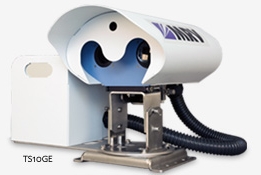Free Space Optics (FSO) a primer
Free Space Optics (FSO), also known as optical wireless communication, is a wireless communication technology that uses light to transmit data through the air. FSO technology leverages lasers or light-emitting diodes (LEDs) to transmit data between two points without needing physical cables or fiber optics. Here’s how FSO works:
1. Light Source and Modulation:
- In FSO communication, a light source, typically a laser or an LED, generates an optical signal. The light source is modulated to encode digital data into the optical signal. Modulation is the process of varying the intensity or frequency of the light in sync with the data to be transmitted.

2. Transmission Path:
- The optical signal is directed towards a receiving point, often located several kilometers away. The path between the transmitter and the receiver is typically in the line of sight, ensuring that there are no obstructions, such as buildings or trees, to interfere with the light signal.

3. Atmospheric Transmission:
- FSO technology uses the Earth’s atmosphere as the transmission medium. The optical signal travels through the air and can be affected by atmospheric conditions such as fog, rain, and turbulence. These factors can cause signal attenuation or disruptions.

4. Optical Lens or Telescope:
- The transmitter and the receiver are equipped with optical lenses or telescopes that help focus and collimate the optical signal. This ensures the signal remains as concentrated and directed as possible over long distances.
5. Detection and Reception:
- At the receiving end, a photodetector is used to detect the incoming optical signal. The photodetector converts the light signal into an electrical signal. Different photodetectors, such as photodiodes, capture the incoming light.
6. Signal Processing:
- The electrical signal is then processed to recover the original data modulated onto the light signal. Signal processing techniques such as demodulation and error correction are applied to ensure data integrity.

7. Data Output:
- Once the data is recovered, it can be sent to the destination device or network for further processing or utilization. In many cases, the received data is integrated into the existing network infrastructure.
Advantages of FSO:
- High Data Rates: FSO can achieve high data transmission rates, making it suitable for applications that require high bandwidth.
- Security: FSO is highly secure, as it is challenging to intercept the optical signal without physical access to the transmission path.
- License-Free: FSO technology does not require regulatory licenses for operation, making it a cost-effective solution.
Challenges of FSO:
- Weather Dependence: FSO is susceptible to weather conditions, especially fog, rain, and turbulence, which can degrade signal quality.
- Line of Sight: FSO requires an unobstructed line of sight between the transmitter and receiver, limiting its applicability in certain environments.
- Limited Range: The effective range of FSO is typically several thousand feet, which may not be suitable for long-distance communications.
FSO technology is often used in various applications, including point-to-point communication between buildings, last-mile connectivity, and disaster recovery scenarios where traditional wired or wireless connections are unavailable. It offers a unique and valuable solution for specific use cases where high-speed, secure, and license-free communication is essential.
j2networks family of siteshttps://j2sw.com
https://startawisp.info
https://indycolo.net
#packetsdownrange #routethelight